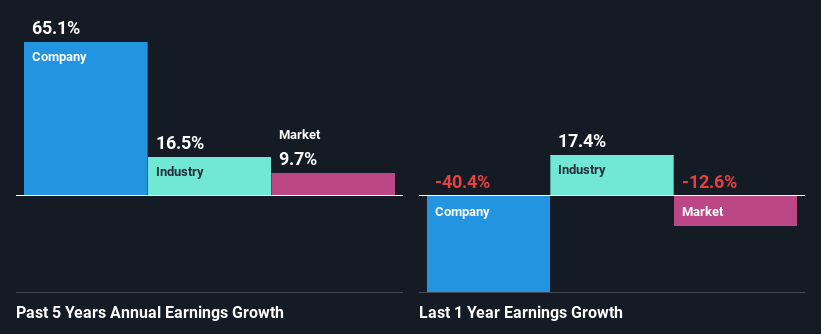Do Fundamentals Have Any Role To Play In Driving NZ Windfarms Limited's (NZSE:NWF) Stock Up Recently?
Most readers would already know that NZ Windfarms' (NZSE:NWF) stock increased by 2.4% over the past month. Given that stock prices are usually aligned with a company's financial performance in the long-term, we decided to investigate if the company's decent financials had a hand to play in the recent price move. Specifically, we decided to study NZ Windfarms' ROE in this article.
Return on Equity or ROE is a test of how effectively a company is growing its value and managing investors’ money. In short, ROE shows the profit each dollar generates with respect to its shareholder investments.
Check out our latest analysis for NZ Windfarms
How Do You Calculate Return On Equity?
Return on equity can be calculated by using the formula:
Return on Equity = Net Profit (from continuing operations) ÷ Shareholders' Equity
So, based on the above formula, the ROE for NZ Windfarms is:
6.2% = NZ$2.6m ÷ NZ$42m (Based on the trailing twelve months to December 2022).
The 'return' refers to a company's earnings over the last year. So, this means that for every NZ$1 of its shareholder's investments, the company generates a profit of NZ$0.06.
Why Is ROE Important For Earnings Growth?
So far, we've learned that ROE is a measure of a company's profitability. Based on how much of its profits the company chooses to reinvest or "retain", we are then able to evaluate a company's future ability to generate profits. Assuming all else is equal, companies that have both a higher return on equity and higher profit retention are usually the ones that have a higher growth rate when compared to companies that don't have the same features.
NZ Windfarms' Earnings Growth And 6.2% ROE
At first glance, NZ Windfarms' ROE doesn't look very promising. However, its ROE is similar to the industry average of 6.2%, so we won't completely dismiss the company. Looking at NZ Windfarms' exceptional 65% five-year net income growth in particular, we are definitely impressed. Taking into consideration that the ROE is not particularly high, we reckon that there could also be other factors at play which could be influencing the company's growth. For example, it is possible that the company's management has made some good strategic decisions, or that the company has a low payout ratio.
As a next step, we compared NZ Windfarms' net income growth with the industry, and pleasingly, we found that the growth seen by the company is higher than the average industry growth of 17%.
Earnings growth is a huge factor in stock valuation. It’s important for an investor to know whether the market has priced in the company's expected earnings growth (or decline). This then helps them determine if the stock is placed for a bright or bleak future. Is NZ Windfarms fairly valued compared to other companies? These 3 valuation measures might help you decide.
Is NZ Windfarms Using Its Retained Earnings Effectively?
While the company did pay out a portion of its dividend in the past, it currently doesn't pay a dividend. This is likely what's driving the high earnings growth number discussed above.
Conclusion
Overall, we feel that NZ Windfarms certainly does have some positive factors to consider. With a high rate of reinvestment, albeit at a low ROE, the company has managed to see a considerable growth in its earnings. Until now, we have only just grazed the surface of the company's past performance by looking at the company's fundamentals. To gain further insights into NZ Windfarms' past profit growth, check out this visualization of past earnings, revenue and cash flows.
Have feedback on this article? Concerned about the content? Get in touch with us directly. Alternatively, email editorial-team (at) simplywallst.com.
This article by Simply Wall St is general in nature. We provide commentary based on historical data and analyst forecasts only using an unbiased methodology and our articles are not intended to be financial advice. It does not constitute a recommendation to buy or sell any stock, and does not take account of your objectives, or your financial situation. We aim to bring you long-term focused analysis driven by fundamental data. Note that our analysis may not factor in the latest price-sensitive company announcements or qualitative material. Simply Wall St has no position in any stocks mentioned.

 Yahoo Finance
Yahoo Finance 
